“Make your mark in New York and you are a made man.”
-Mark Twain-
The “Big Apple,” the “City That Never Sleeps”—New York is a city of superlatives: America’s biggest; its most exciting; its business
and cultural capitals; the nation’s trendsetter.
In the 1973 James Bond film Live and Let Die, 007 is sent to New York to investigate the murder of an MI6 agent.
The city seems to pull in the best and the brightest from every corner of the country. The city’s ethnic flavor has been nuanced by decades of immigrants whose first glimpse of America was the Statue of Liberty guarding New York Harbor and by large expatriate communities such as the United Nations headquartered there. Just minutes from the multimillion-dollar two-bedroom co-op apartments of Park Avenue, though, lies some of the most dire urban poverty in America. But the attendant crime that affects New Yorkers and visitors alike has seen a continued dramatic reduction from 1993 to 2004—NYC has a murder rate half that of cities such as Los Angeles and Chicago, in part as the result of a concerted effort by local agencies. But for all its eight million residents, New York remains a city of neighborhoods, whether it’s avant-garde Greenwich Village, bustling Harlem, the ultra-sophisticated TriBeCa, or one of the ethnic enclaves such as Little Italy or Chinatown. And a cleaner, brighter, safer New York is attracting people from around the world who are coming to enjoy the city’s renaissance.
The 10 Top Attractions
1. Central Park
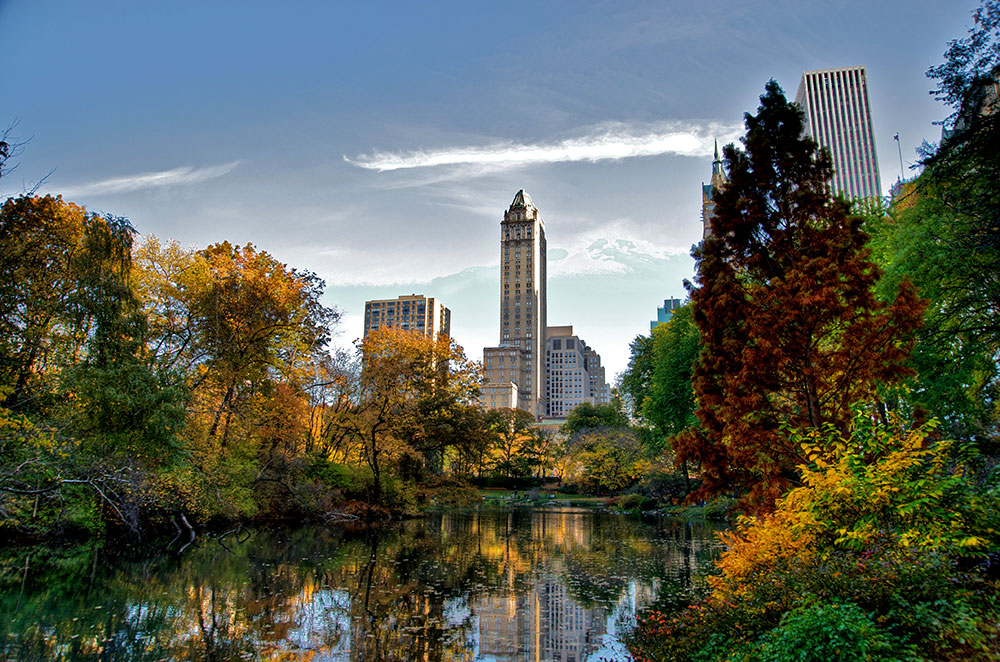
Designed by Calvert Vaux and Frederick Law Olmsted, Central Park is home to 843 acres of verdant views, vibrant flora and hidden histories. The best way to see it all? By bicycle. For an early morning jaunt, head to the park anytime after 6 a.m. You can rent a bike for two hours and go solo for $20, or you can book a two-hour expedition through Central Park Bike Tours, which takes off at 9 a.m. and costs about $47 per person. With well-marked routes of 6.1, 5.2 or 1.7 miles, you can take your time cycling through the hilly terrain, stopping to see the model sailboats at the Conservatory Water, the Alice in Wonderland sculpture, Belvedere Castle atop Vista Rock, or the Bow Bridge — one of the park’s most photographed locations. Completed in 1862, the Bow Bridge’s cast-iron arch stretches 60 ft. over the lake, connecting Cherry Hill and the Ramble.
2. Empire State Building
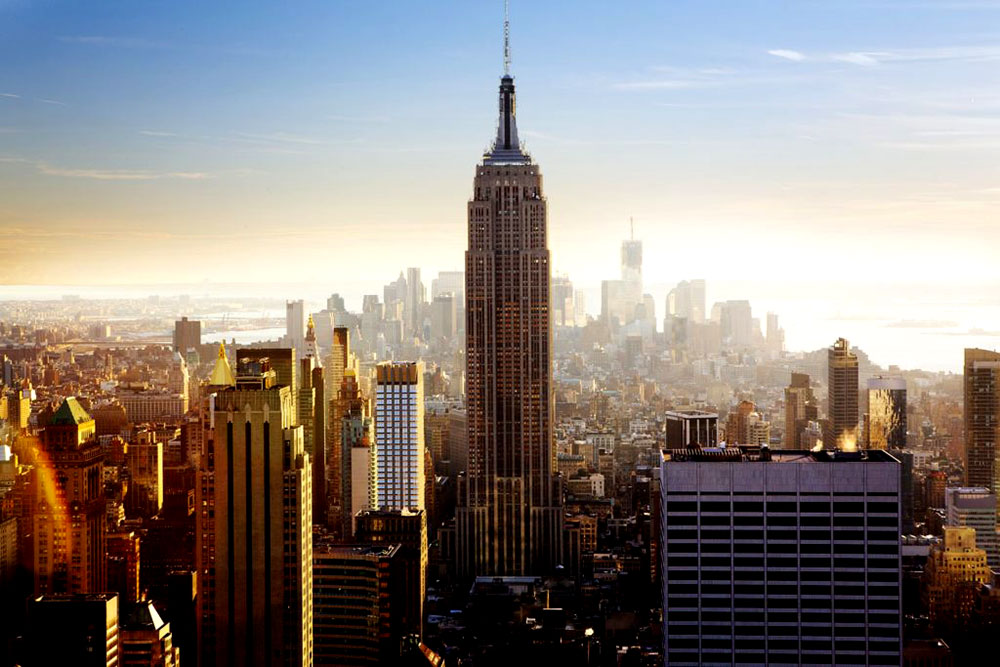
If you must visit an ultra-touristy site, the Empire State Building (ESB) is the one. The stately deco architecture rivals the nearby Chrysler Building for Best in Class honors and it is, once again, New York’s tallest structure. The view from the 86th-floor observation deck is breathtaking. You won’t be the only one who’s decided to visit, so prepare to wait in line; to avoid the throngs, the best times to come are at 8:30 a.m. or during lunch and dinner hours, Monday through Wednesday. Tickets are steep, but worth it: $22 for adults; $45 for an “express pass” that whisks you pass the hordes. For an extra $15 you can buy a ticket to the more intimate 102nd-floor observation deck. Buy your ticket online to reduce waiting-in-line time.
3. Statue of Liberty and Ellis Island
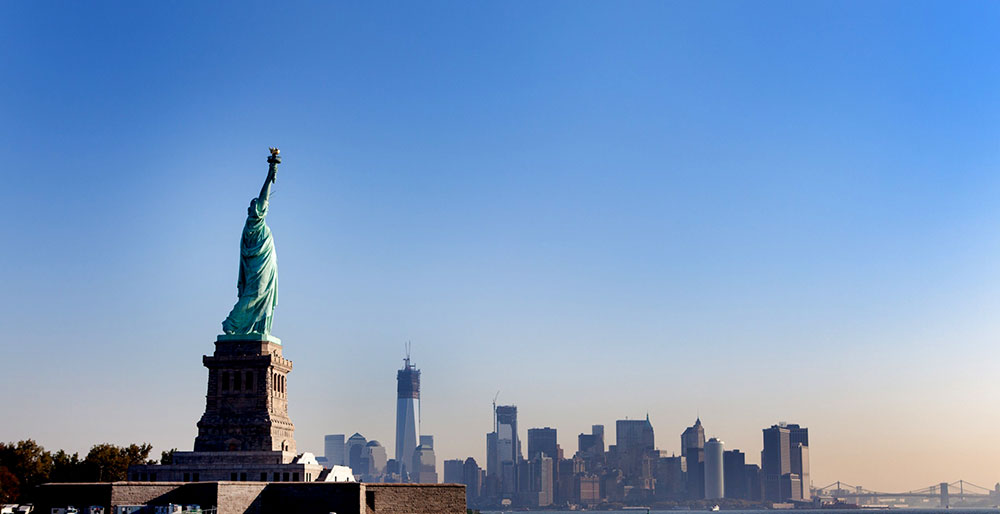
The Statue of Liberty is New York City’s most recognizable landmark, a gleaming beacon for generations of immigrants seeking a better life in America. To visit the monument, buy tickets online in advance of your trip at statuecruises.com. (Though you can see Lady Liberty from land, the short ferry ride to Liberty Island will bring you up close and personal.)
The nearby Ellis Island Immigration Museum provides a fascinating view of a historic crossroads. At this site, visitors can explore the building that served as the first port of entry in the United States for approximately 12 million immigrants, as well as search ship manifests for passenger names in the American Family Immigration History Center.
4. West Village Stroll
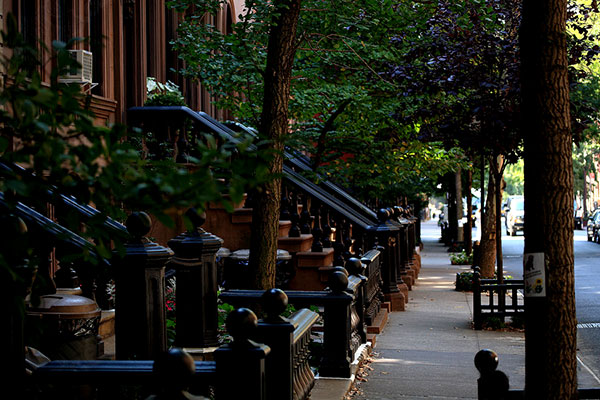
This neighborhood of quaint brownstones clustered along tree-lined cobblestone streets remains virtually unchanged since the 19th century. You’ll need a map to navigate the puzzling geography — how does West 4th Street intersect with West 10th Street, exactly? — as it’s one of the few areas in Manhattan that strays from the orderly street grid. Better, though, to just wander aimlessly. Highlights include the Jefferson Market Courthouse, a former women’s detention center that once held Mae West, and the shops along Bleecker St. and Commerce St. — the most beautiful block-long side street in NYC. Ignore the temptation to join the curiously long line outside Magnolia Bakery (they’re queuing for cupcakes). Head two blocks west instead to the Spotted Pig, a bustling gastropub where you can recharge your batteries with a cask-conditioned ale.
5-9/11 Memorial & Museum
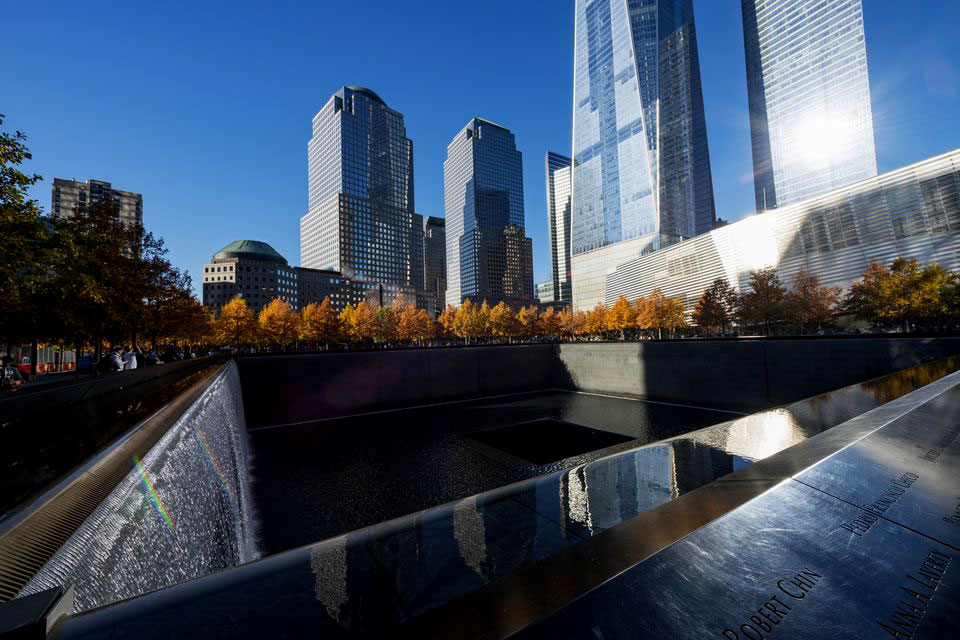
The memorial portion of the 9/11 Memorial & Museum at the World Trade Center was dedicated on September 11, 2011—the 10th anniversary of the attacks—with a ceremony for the families of victims, and opened to the public the following day. Admission to the memorial is free, and visitor passes are not required. Eight acres in all, the Memorial Plaza features more than 400 trees and provides a sanctuary for quiet contemplation. Waterfalls flow into two large reflecting pools, in the towers’ footprints, and the names of the men, women and children who lost their lives are inscribed in bronze parapets that surround the pools. The museum, located beneath the Plaza, houses exhibitions with artifacts, pictures, videos and accounts from people from around the United States and the world, amounting to a jointly told history of September 11, 2001.
6. Grand Central Terminal
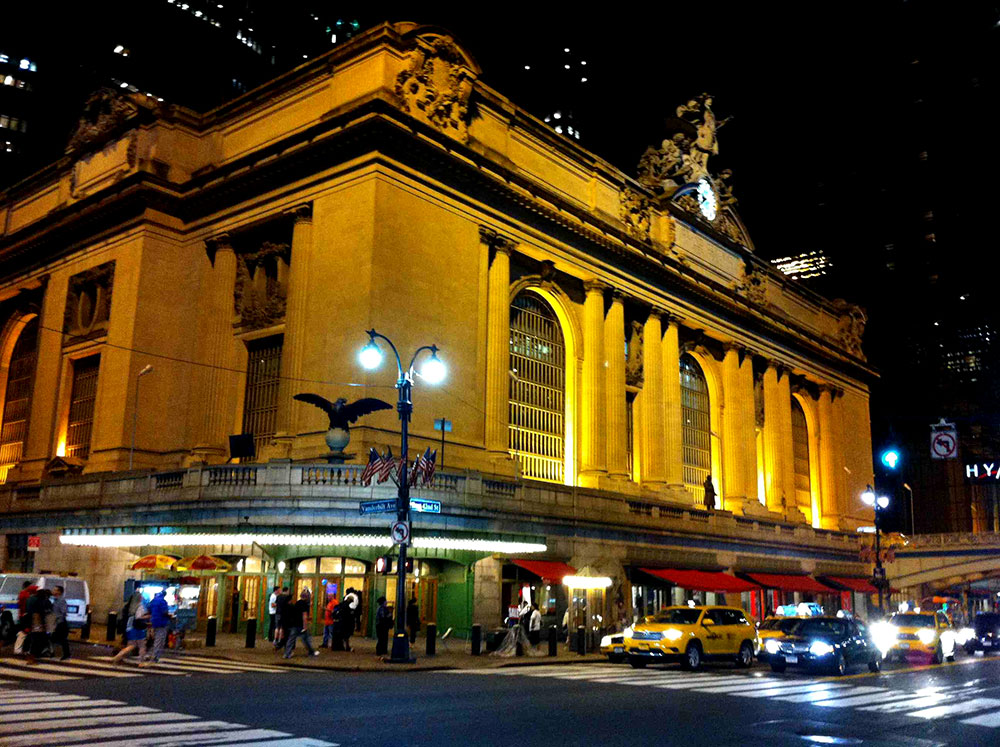
Take the express back to a bygone era. Grand Central Terminal — don’t call it Grand Central Station — is a living, bustling temple to New York’s illustrious past. Gaze at the celestial ceiling mural above the vast main concourse. Slurp some Kumamotos at the legendary Oyster Bar downstairs, and wash them down with a Manhattan at the swank Campbell Apartment. Tell a secret to your partner in the Whispering Gallery: stand at the end of either Oyster Bar ramp and whisper into the wall; you’ll be heard way across on the other side. Mingle with the commuters in the gourmet culinary market. Explore the “secret” elevated passageways for a spectacular view of the concourse. Even if you have nowhere to go you can spend hours in the 100-year-old depot and never get bored.
7. Brooklyn Bridge
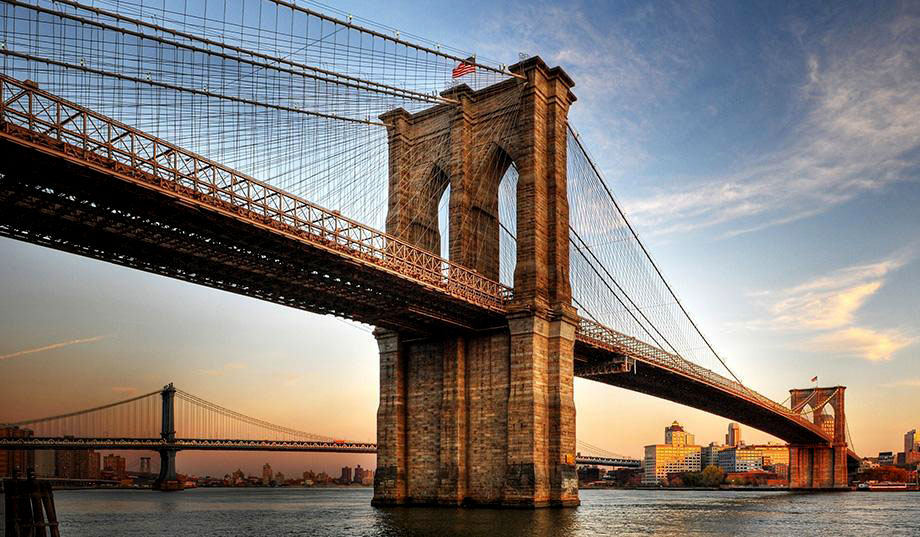
John Roebling’s engineering masterpiece was the world’s longest suspension bridge upon its completion in 1883. One of the most recognizable structures in NYC, the bridge has been featured in countless movies and television shows and, as the first land passage between Manhattan and Brooklyn, represents a critical piece of New York City history. Though the bridge is visible from the shores of both boroughs, it is best experienced through a leisurely stroll across its elevated pedestrian walkway. Here, visitors from around the world can share a path with New Yorkers making their daily commute; those walking across can enjoy views of downtown Manhattan and New York Harbor on every step of the 5,989-foot traverse. The Manhattan-side entrance is at Park Row and Centre Street, across from City Hall Park.
8. Times Square
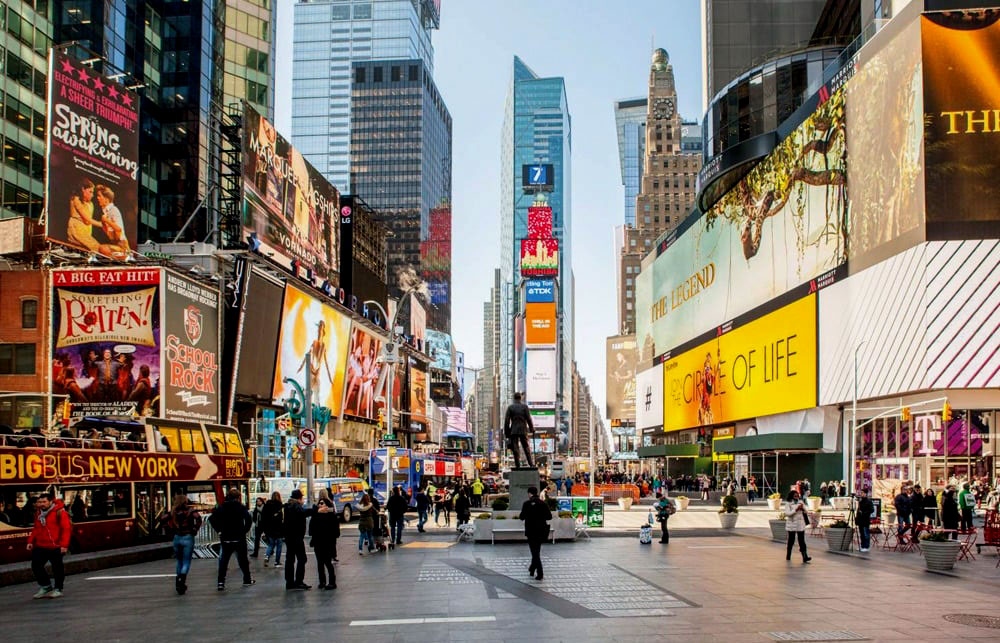
Not sure where to look while walking through world-famous Times Square? Don’t worry—you’re not alone. With massive digital billboards whose bright lights make midnight look like midafternoon; star-studded Broadway and Off-Broadway shows (and reduced-price tickets to see them available from the TKTS Discount Booth); people peddling art and jewelry on the street; and, of course, the Naked Cowboy—who plays guitar in his tighty-whities—the expansive stretch of Midtown is a feast for all five senses. Visitors can shop in flagship locations of such stores as Toys “R” Us (which boasts an indoor Ferris wheel), take pictures with wax celebrities at Madame Tussauds, watch the ball drop on New Year’s Eve or grab a pre- or post-theater meal along Restaurant Row (West 46th Street, between Eighth and Ninth Avenues), where many eateries offer prix-fixe deals. And with Broadway closed to cars from West 42nd to West 47th Streets, Times Square is now more pedestrian friendly than ever.
9. Coney Island
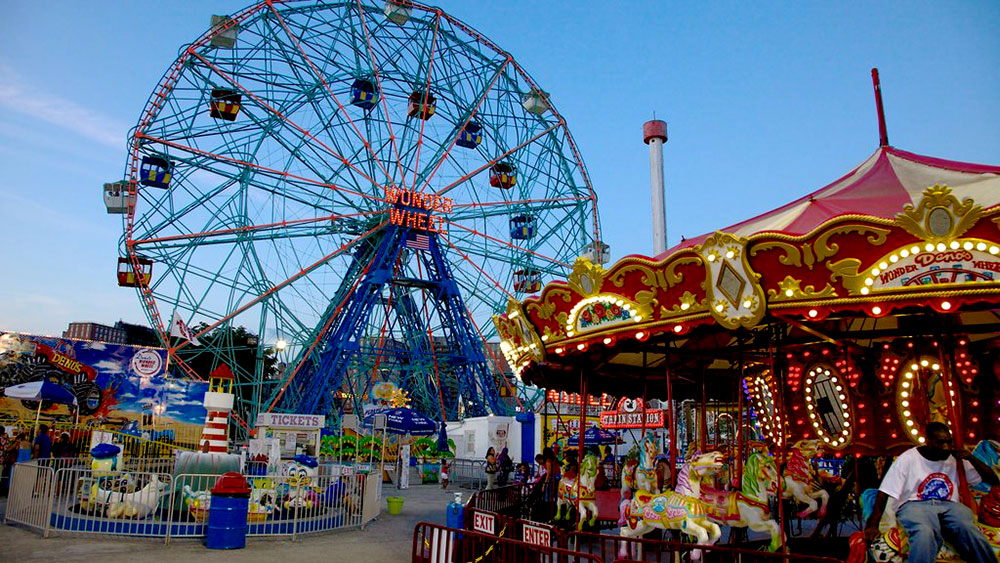
The ups and downs of the nearly 90-year-old Cyclone roller coaster are a fitting metaphor for the Coney Island experience lately—every year seems to bring big changes to the quirky beachfront amusement district, but a visit there is always entertaining. The latest addition is the Thunderbolt, a new coaster named after a ride that was shut down back in 1982. These days, classic Boardwalk institutions like Ruby’s Bar and Grill, Deno’s Wonder Wheel Amusement Park and Nathan’s Famous operate next to shiny thrill-ride tract Luna Park, whose Scream Zone twists, turns, drops and spins patrons into a state of pure bliss (or at least bliss with a splash of queasiness). Other area attractions include MCU Park, the gorgeous home of Mets minor-league affiliate the Brooklyn Cyclones (who play from June through early September), and the New York Aquarium, which features a menagerie of aquatic life including walruses, penguins and cownose rays. Also worth visiting on Brooklyn’s south shore is famed Russian enclave Brighton Beach, just a short stroll away on the Boardwalk.
10. Yankee Stadium
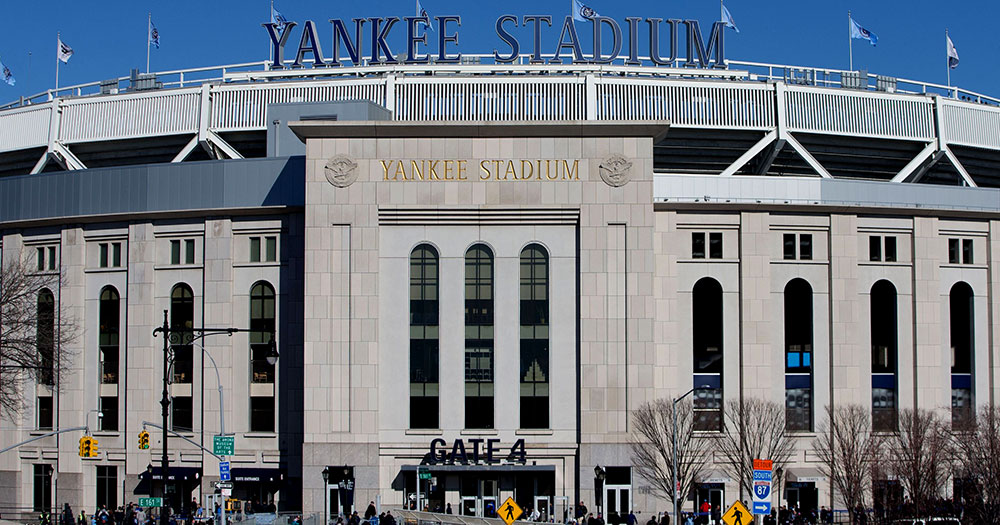
The original Yankee Stadium, known as “The House That Ruth Built”, opened in 1923 and served as the Yankees’ home until 2008. The new Yankee Stadium opened in 2009, and the team capped the venue’s inaugural season with its 27th World Series title. This monolith, which retains some of the more beloved features from the old hallowed iteration, is a must-see for any baseball fan. Visitors can take a guided tour, which includes stops at the clubhouse/batting cage area (only during the off-season or when the team is on the road), the dugout and Monument Park, as well as the New York Yankees Museum, which offers a fascinating look at the history of the storied franchise. Of course, professional sports in New York City go much deeper than just the Yankees..
Share this:
- Click to share on Facebook (Opens in new window)
- Click to share on Twitter (Opens in new window)
- Click to print (Opens in new window)
- Click to share on LinkedIn (Opens in new window)
- Click to share on Reddit (Opens in new window)
- Click to share on Tumblr (Opens in new window)
- Click to share on Pinterest (Opens in new window)
- Click to share on Pocket (Opens in new window)
- Click to share on Telegram (Opens in new window)
- Click to share on WhatsApp (Opens in new window)


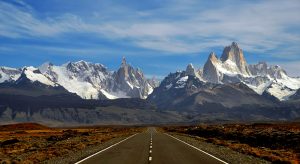
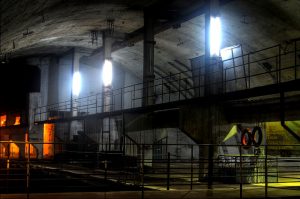
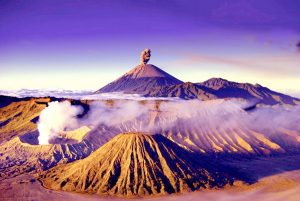
Pingback: Abandoned Bannerman Castle: Mystery On A Hudson River Island | Welcome to the 007 World!
Pingback: Elsa Hosk, The Swedish Supermodel | Welcome to the 007 World!
Pingback: Emily DiDonato, Fashion Model | Welcome to the 007 World!
Pingback: Hailey Clauson, Model And Actress | Welcome to the 007 World!
Pingback: Gizele Oliveira, Brazilian model | Welcome to the 007 World!
Pingback: Amanda Rodriguez, American Model | Welcome to the 007 World!